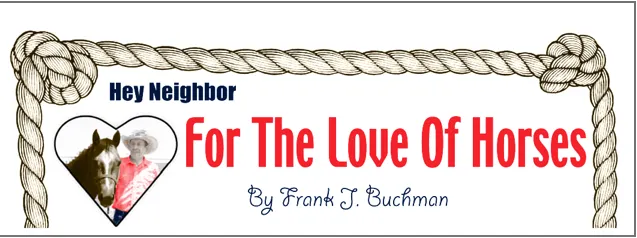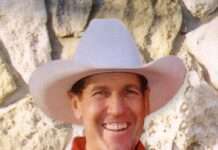A horse that turns efficiently will get more work done whatever the discipline.
“Circles are one of the basics of horse training, and precursor for turning,” according to trainer Al Dunning, Scottsdale, Arizona.
“The horse must first ride forward readily at the rate of speed requested and stop smoothly,” Dunning said. “He should back with no resistance and understand leg cues.”
Walking and trotting circles until a horse “hunts the circles” while keeping his body round are beginning of the turnaround.
Horses are started to turn by using a one-two-three method. “One is pulling the inside rein to give the horse direction,” Dunning explained. “Two is adding the outside rein, which should move the outside shoulder inward. Three is adding your outside leg for required impulsion.”
Most of the time the left small circle is easier than the right. “You must understand that since your horse was born, he has been handled mostly on the left side,” Dunning clarified. “Horses are predisposed to ‘left-it-is.’
“To equal the sides, more work must be done from the right, three times right to one left,” he said.
The key to a horse turning is what they are doing with their shoulders and their front feet. “To get the front feet moving, I direct rein so they follow without moving their hind end,” Dunning said. “Stiff horses should be schooled by the right direct rein pulled towards your hip. Use your right leg to create an arc on the inside of the horse.”
It is incorrect to pull harder on a stiff horse. “Rather, use your leg on the corresponding side as you rein pull,” Dunning said. “After a horse becomes supple following his head, this is when the one-two-three method comes into play.”
Shoulders should rotate with the inside leg stepping back to allow the outside front leg to cross over. “A horse that maintains his hip posture properly will turn around on the inside hind pivot foot,” Dunning said.
Most horses will move the pivot foot slightly to feel comfortable carrying the consistent weight on the rear inside corner.
“As a rider, you should sit square in the saddle, watch the inside eye of the horse,” Dunning said. “Stay in concert with your hands and the horse’s step.”
It is important to “push” a horse forward that wants to go too far back. Get a horse more collected if they want to move too far forward. “Every horse is different and the rider must adapt,” Dunning emphasized.
In a good turn, the horse should have a slight arc on the inside of his body towards the turn. “When asked, the horse’s head should come first, followed by neck, shoulders, and outside rib,” the trainer said.
“The hip should not fall to the outside of the turn,” he continued. “The horse’s step with his front feet should be rhythmic.”
Suppling exercises like bending, backing circles and side passing can help a horse think about rotating smoothly and easily.
“It is important to envision a good turn in your head. You can’t force the freeness of the front end turning around the hind end,” Dunning pointed out.
“The goal is to be able to ride anywhere with one hand,” the trainer emphasized. “Be able to stop, lay the rein on the horse softly and the horse respond by bending the direction desired.”
He should rotate the shoulders while holding his hip still with the outside front foot crossing over the inside foot.
“Your horse should turn as slow or as fast as requested by your outside leg and verbal encouragement,” Dunning said. “It is paramount not to force the horse to turn with your outside rein or too much aggression.
“When done properly, a horse’s turn can be a big part of a great ride,” Dunning summarized.
Additional information can be found at www.AlDunning.com.
CUTLINE
Circles are the beginning maneuver in efficient turning for proficient horsemanship, according to renowned horse trainer Al Dunning, Scottsdale, Arizona. (TS Photography)



